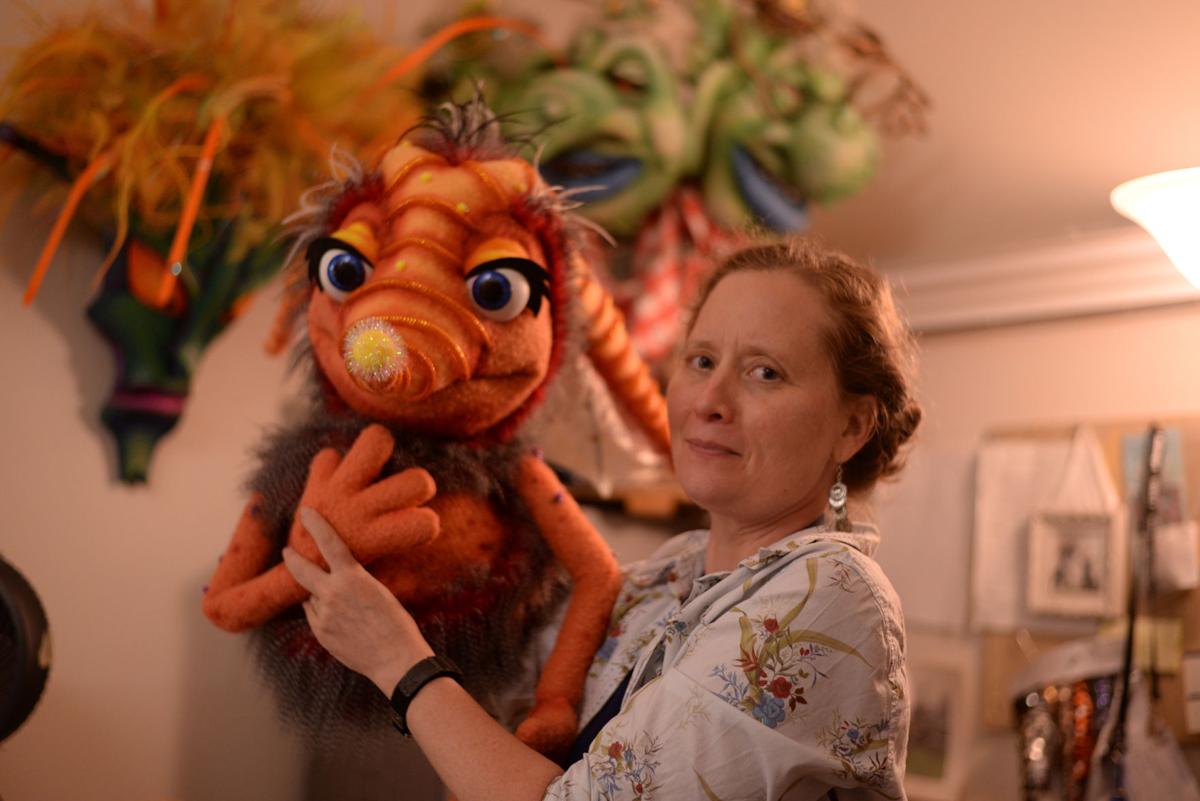When West Virginia native, Mary McClung, is creating a new puppet, she feels a special connection to them. She gets into their head, and tries to imagine what got them out of bed in the morning and helped make their decisions that day. Technically, as designer, she isn’t supposed to build the puppets, but she loves getting into the details, and said she even feels like a dental hygienist, sometimes.
What drew you to puppetry?
I was a studio potter and I just kept throwing the same mugs. It just wasn’t for me. Also, it was a life of being a solitary person. I did a lot of sculpting, so I thought, the next thing seems like these need to talk, and move. I’m not an extrovert, but I do like to be around people because I like collaborating. When we’re all together and we are all working together to tell a story.
Do you enjoy being a professor in puppetry?
I worked at Animax Designs (a puppet workshop in Nashville), and I loved it because everything I would draw we could create exactly like I drew it. It spoiled me so much. But then we just put it in a box like it was a package. I just thought that it was lacking something. There was no getting to see them animate. This school is great because it is research institution, so they support and really want you to experiment with things. I wouldn’t have ever gotten to experiment with polyfoam masks, which are custom to the actor’s face. So when the actor moves, they’ll move somewhat.
What goes into learning puppetry?
For me it is storytelling, and creating the environment and the characters. Not only can you change the texture, creature and species, and everything, but you can also change the scale. It could even be a shadow puppet. So it’s looking at things from different angles, looking at the object as a person, or as a thing that can move as an entity. It’s amazing that you can take a play that’s meant for humans and translate it into a puppet show, and it will be just as successful, or even more successful. You basically have to be self-sufficient as a puppet person, because you are doing everything. So you learn how to move the puppets, lighting, scene design, creature design, colors, materials and honing your skills to work with different materials, and it’s also being a writer and a director sometimes. You have to promote yourself and do all of your business. You’re a package.
How do you choose the materials you use when making puppets?
It kind of comes through the research and the feeling I want it to have. If I want it to have a primitive look, I may want the texture to be kind of coarse, or the movement to be sort of blocky, or even make it more simplified. We use all kinds of things, like different forms of plastic, wood, paper mache, and different kinds of foams. They can be made out of anything. It’s kind of the same thing you do when you do costume or scene design. The feeling you want the audience to come away with, or you want it to have, kind of drives it.
Do you favor any specific way of making puppets?
I do like making things look as real as possible. I like to make them look like they came from a real place, and I want them to look real in their world. So I like carving details, and making teeth and toes. So I guess to some degree I like realism. I also like recycling things, like reusing a milk jug for a toe nail or soup cans for armor. If I think something is a really good material, then I keep it and I use it. It makes me a hoarder, but I end up using so many things.















 WVU's Independent Student Newspaper
WVU's Independent Student Newspaper